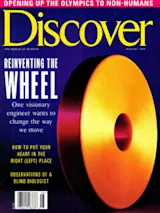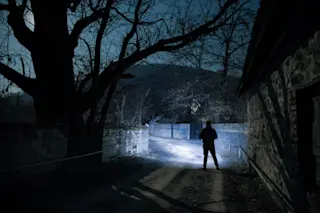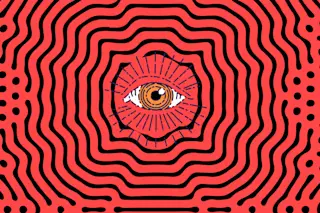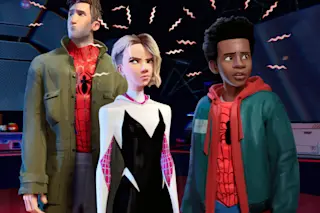Most devotees of Westerns have probably noticed that, on film, stagecoach or wagon wheels often appear to be turning in the direction opposite that of the vehicle’s motion. This trick of the screen, says neurobiologist Dale Purves at Duke University Medical Center, may provide clues to the way our brain processes images of the real world.
Movies are made of a strip of sequentially illuminated, discrete images. We don’t see them that way because the images flicker at a rate of 96 times per second on the screen--too fast for our eyes to detect. Were the film speed perfectly in sync with the rotation of, say, a wheel being filmed, the wheel would complete a rotation whenever an image of it occurred, making it appear stationary. As it happens, though, a wheel of a moving vehicle often lags slightly behind the film speed, so that a spoke has not quite returned to its initial position at the moment an image is taken. As we focus on a spoke’s original position, the forward-moving wheel appears on film to turn backward.
While driving home from the lab one day, Purves noticed that the hubcap of a car traveling next to him also appeared to spin backward. Purves, of course, was not the first person to notice this phenomenon. But apparently not much research has been done on why, for example, wheels and fans can suddenly appear to reverse their direction in broad daylight.
Purves and his colleagues showed 12 observers a rotating disk decorated with evenly spaced dots or spokes to simulate a wagon wheel. The researchers could control the rotation speed. When the disk rotated more than twice per second, 11 of the 12 subjects began noticing reversals in the rotation direction that lasted several seconds. The same patterns arranged on a rotating drum and passed before the observers--who could see only the front of the drum and were thus not witnessing a full rotation-- produced an identical effect. The episodes of movie vision clearly depended, says Purves, not on rotation per se but only on the frequency with which pattern elements passed a point fixed by the eyes of the viewer.
The fact that you can see the wagon wheel illusion without stroboscopic light suggests that there is some element of vision that is providing units itself, comments Purves. Do our brains then process images of the world as a series of still-life shots and compare successive images to create the appearance of motion? Much more research needs to be done before that question can be answered, says Purves, but he finds the similarities between his experiments and filmed motion suggestive. The reason movies and tv are so realistic may be that those things are just fitting into the way our visual system is operating all the time.














